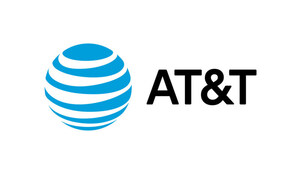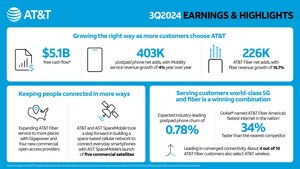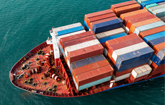ATLANTA, June 3, 2016 /PRNewswire/ -- AT&T* is committed to keep its customers connected during the upcoming hurricane season - before, during and after storms - and has one of the industry's largest and most advanced business continuity and disaster response programs to make sure its networks stay up and running.
No one knows when the next tropical storm or hurricane will hit the coastline. But, AT&T is prepared with one of the nation's largest and most advanced disaster programs. It invested more than $600 million in the Network Disaster Recovery (NDR) program. And an arsenal of equipment is ready for deployment, including more than 300 technology and equipment trailers that can be quickly deployed, making it one of the nation's largest and most advanced disaster programs.
"Staying connected during severe weather events is critically important to consumers, businesses and our emergency management officials," said Bill Leahy, President of AT&T Georgia. "That's why AT&T is investing a tremendous amount of resources in our network reliability and disaster response capabilities."
The NDR team works to make sure the right people and tools are in place and ready near the storm impact area. They work with other AT&T response teams, local AT&T network personnel, regional Emergency Operations Centers and Local Response Centers to prepare. Teams are ready to restore and maintain service if disaster strikes.
AT&T is the only telecom company to recently become re-certified under new international standards (ISO 22301) by the Department of Homeland Security for its disaster preparedness program.
AT&T conducts readiness drills and simulations year round to keep networks and our people ready to respond at a moment's notice. NDR will complete its 75th full-field recovery exercise this year. The AT&T Global Network Operations Center monitors our networks 24/7. Since forming in 1991, the NDR has responded to more than 70 events in the U.S.
AT&T standard pre-storm network preparations typically include:
- Boosting the wireless network to accommodate increased call volume.
- Testing the high-capacity backup batteries located at cell sites.
- Staging extended battery life and portable generators and maintaining existing fixed generators.
- Topping off generators with fuel at cell sites and switching facilities.
- Using natural gas in some of the permanent generators to eliminate the need to refuel.
- Staging generators in safe locations for immediate deployment once a storm has passed.
Response equipment readied in the wake of an event includes:
- Mobile cell sites and mobile command centers
- Emergency communications vehicles
- A self-sufficient base camp. This is complete with sleeping tents, bathrooms, kitchen, laundry facilities, on-site nurse and meals ready to eat (MREs).
- Hazmat equipment and supplies
- Technology and support trailers to provide infrastructure support and mobile heating ventilation and air conditioning
- Internal and external resources for initial assessment and recovery efforts.
As we prepare, so should you.
Consumers and businesses also should have a plan in place. When preparing for an evacuation or shelter-in-place, remember these following tips:
Customer Tips:
- Keep your mobile phone battery charged. In case of a power outage, have another way to charge your phone like an extra battery, car charger or device-charging accessory. Sales tax holidays are a great time to stock up on cell phone accessories.
- Keep your mobile devices dry. The biggest threat to your device during a hurricane is water. Keep it safe from the elements by storing it in a baggie or some other type of protective covering, like an Otterbox phone cover.
- Have a family communications plan. Choose someone out of the area as a central contact. Make sure all family members know who to contact if they get separated. Most importantly, practice your emergency plan in advance.
- Program all of your emergency contact numbers and e-mail addresses into your mobile phone. Numbers should include the police department, fire station and hospital, as well as your family members.
- Forward your home number to your mobile number in the event of an evacuation. Call forwarding is based out of the telephone central office. This means you will get calls from your landline phone even if your local telephone service is disrupted. If the central office is not operational, services such as voicemail and call forwarding may be useful.
- Track the storm and access weather information on your mobile device. Many homes lose power during severe weather. If you have a working mobile device with Internet access, you can watch weather reports through services like AT&T U-verse Live TV . You can also stay updated with local radar and severe weather alerts through My-Cast® Weather, if you subscribe to those services.
- Camera phones provide assistance. If you have a camera phone, take, store and send photos and video clips of damage to your insurance company.
- Use location-based technology. Services like AT&T Navigator and AT&T FamilyMap can help you find evacuation routes or avoid traffic from downed trees or power lines. They can also track a family member's wireless device if you get separated.
- Limit social media activity. Keep social media activity to a minimum during and after a storm to limit network congestion and allow for emergency communications to go through.
Small Business Tips:
- Set up a call-forwarding service to a backup location. Set up a single or multiple hotline number(s) for employees, their families, customers and partners so they all know about the business situation and emergency plan.
- Back up data to the Cloud. Routinely back up files to an off-site location. Services such as Mobile Workplace are great for small businesses.
- Outline detailed plans for evacuation and shelter-in-place. Practice these plans (employee training, etc.). Establish a backup location for your business and meeting place for all employees.
- Assemble a crisis-management team. Coordinate efforts with neighboring businesses and building management. Disasters that affect your suppliers also affect your business. Outline a plan for supply chain continuity for business needs.
- Consider a back-up cellular network. Services like AT&T Remote Mobility Zone protect critical communications for businesses. If a disaster disables primary communications networks, the back-up cellular network can help you stay connected.
Keeping the lines open for emergencies
During evacuations, the storm event and its aftermath, network resources will likely be taxed. To help ensure that emergency personnel have open lines, keep these tips in mind:
- Text messaging. During an emergency situation, text messages may go through more quickly than voice calls because they require fewer network resources. All of AT&T's wireless devices are text messaging capable. Depending on your text or data plan, additional charges may apply.
- Be prepared for high call volume. During an emergency, many people are trying to use their phones at the same time. The increased calling volume may create network congestion, leading to "fast busy" signals on your wireless phone or a slow dial tone on your landline phone. If this happens, hang up, wait several seconds and then try the call again. This allows your original call data to clear the network before you try again.
- Keep non-emergency calls to a minimum, and limit your calls to the most important ones. If there is severe weather, chances are many people will be attempting to place calls to loved ones, friends and business associates.
More information and tips for disaster preparedness can be found at www.att.com/vitalconnections.
*AT&T products and services are provided or offered by subsidiaries and affiliates of AT&T Inc. under the AT&T brand and not by AT&T Inc.
About AT&T
AT&T Inc. (NYSE: T) helps millions around the globe connect with leading entertainment, mobile, high-speed Internet and voice services. We're the world's largest provider of pay TV. We have TV customers in the U.S. and 11 Latin American countries. We offer the best global coverage of any U.S. wireless provider*. And we help businesses worldwide serve their customers better with our mobility and highly secure cloud solutions.
Additional information about AT&T products and services is available at http://about.att.com. Follow our news on Twitter at @ATT, on Facebook at http://www.facebook.com/att and YouTube at http://www.youtube.com/att.
© 2016 AT&T Intellectual Property. All rights reserved. AT&T, the Globe logo and other marks are trademarks and service marks of AT&T Intellectual Property and/or AT&T affiliated companies. All other marks contained herein are the property of their respective owners.
*Global coverage claim based on offering discounted voice and data roaming; LTE roaming; voice roaming; and world-capable smartphone and tablets in more countries than any other U.S. based carrier. International service required. Coverage not available in all areas. Coverage may vary per country and be limited/restricted in some countries.
Logo - http://photos.prnewswire.com/prnh/20120612/DA23287LOGO
SOURCE AT&T
Related Links
WANT YOUR COMPANY'S NEWS FEATURED ON PRNEWSWIRE.COM?
Newsrooms &
Influencers
Digital Media
Outlets
Journalists
Opted In





Share this article